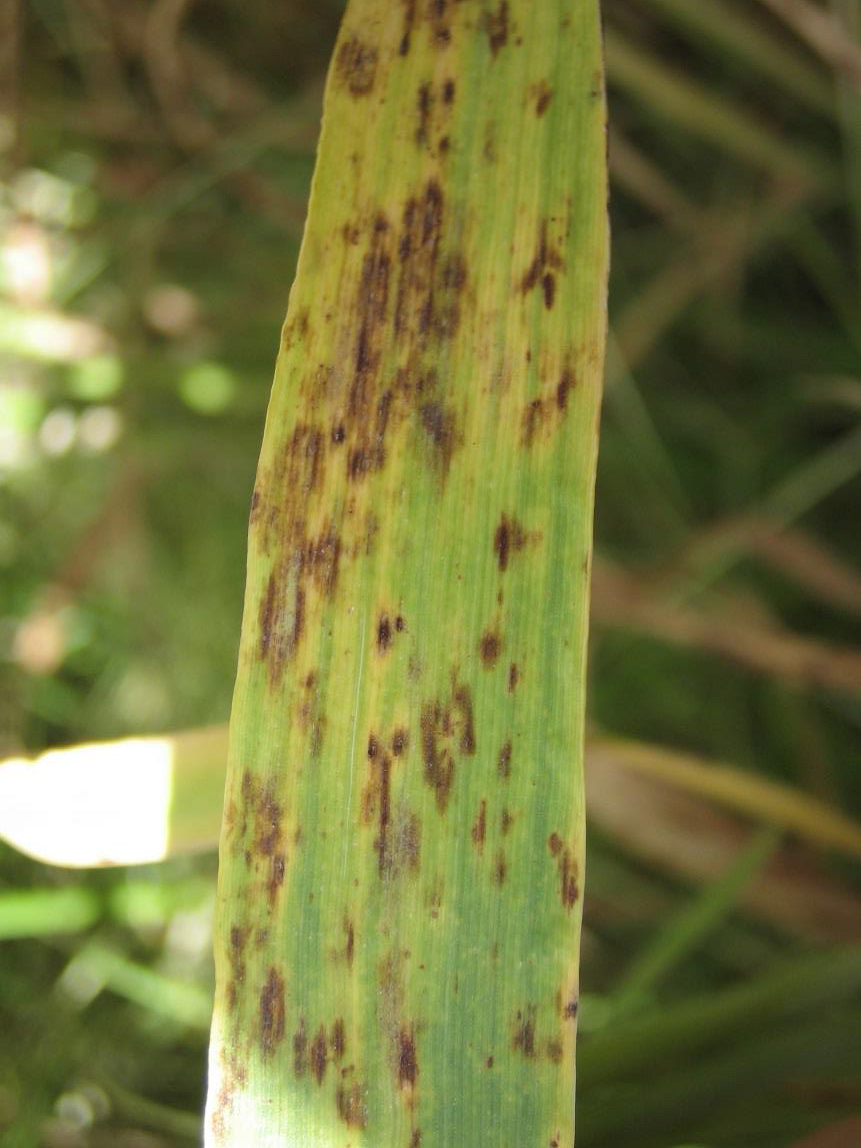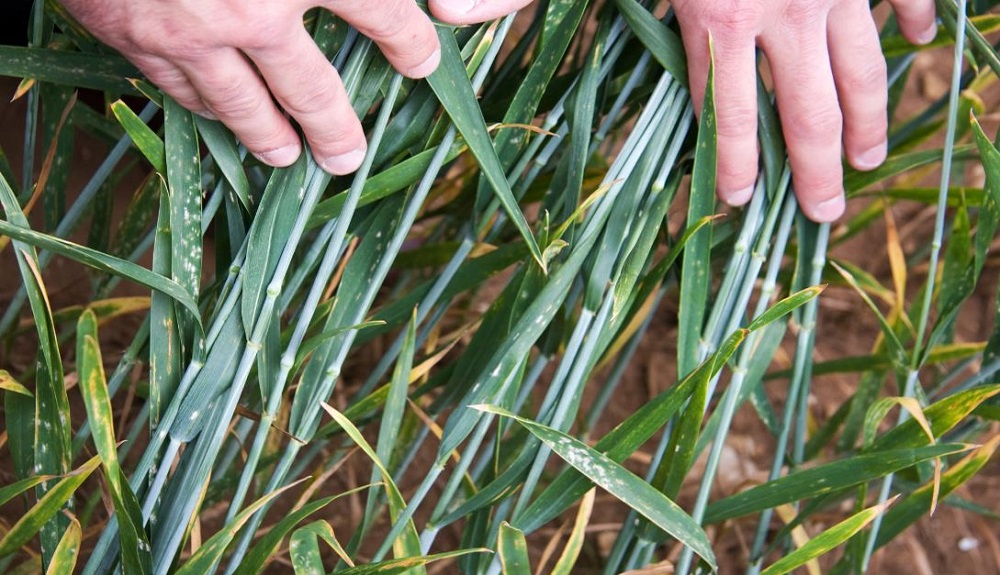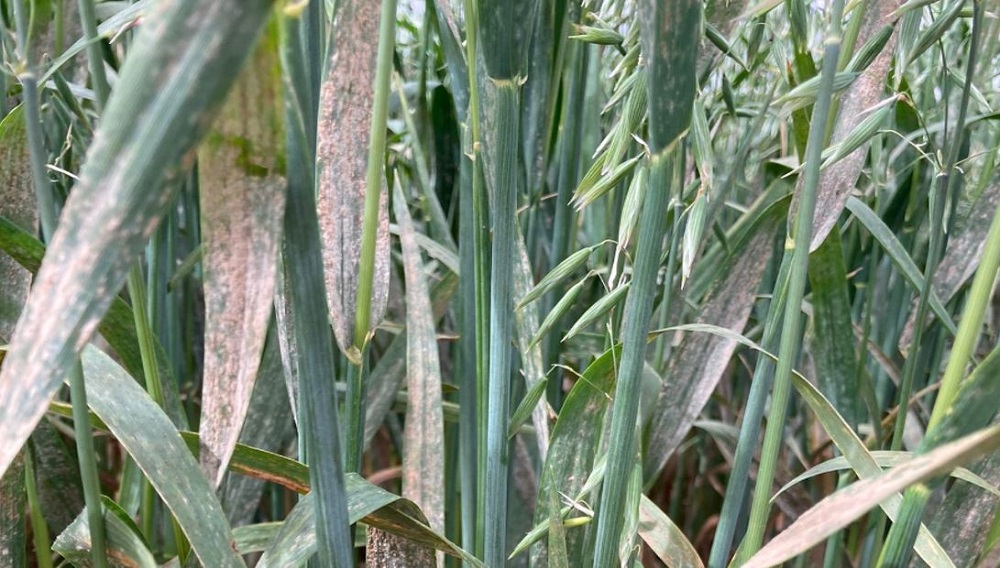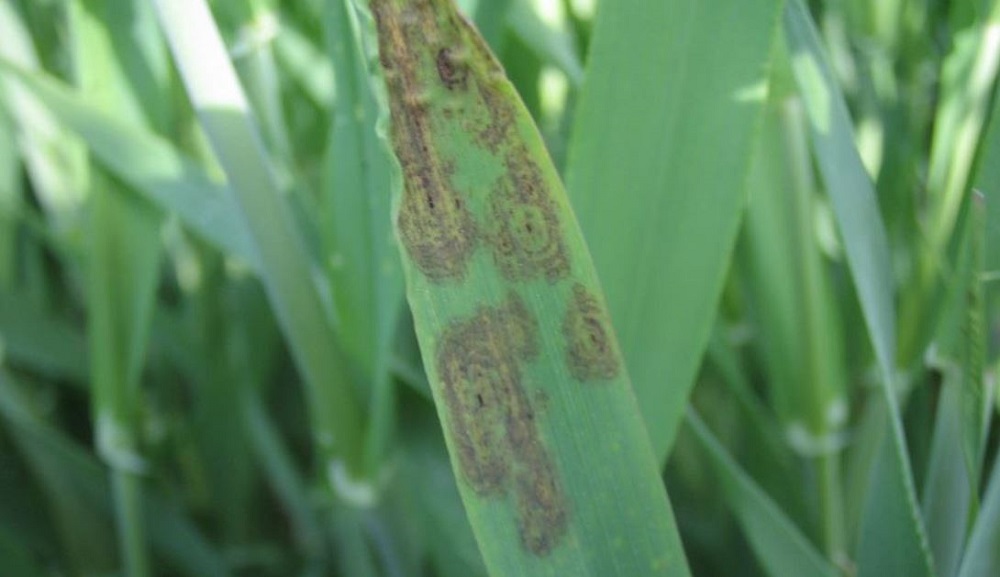- Home
- Knowledge library
- Management of powdery mildew in cereals
Management of powdery mildew in cereals
Varietal resistance, cultural control and fungicides all help ensure that this foliar pathogen rarely causes major issues in the UK. Learn about its life cycle, the symptoms caused and management options.
Cereal disease management homepage
Cereal yield losses associated with powdery mildew
Powdery mildew can infect all cereals. However, its visual appearance usually outweighs the damage potential, especially during the autumn and winter. In highly-susceptible varieties, yield losses can be up to 20% and early control can be very important. However, the disease generally causes much smaller yield losses (rarely exceeding 10%) and late attacks (after flowering) on the flag-leaf and ear rarely cause significant losses.
Crops under stress, late-sown crops, and crops that are growing rapidly in the spring are often particularly prone to attack. Early attacks can reduce tiller number and excessive nitrogen fertiliser can encourage the disease. Mildew can be particularly severe in dense crops.
Classic cereal powdery mildew symptoms
Powdery mildew symptoms develop on leaves, stems and ears. Infection most commonly occurs on leaves, with symptoms occurring from autumn onwards. Typically, white, fluffy pustules appear. These produce masses of spores with a powdery appearance. Eventually, black spore cases (cleistothecia) develop in the mildew pustules, usually towards the end of the season.
In wheat, leaf yellowing is associated with infection. On yellowing leaves, pustules retain a distinctive ‘green island’.
In barley, infection often causes the leaf to turn brown. A ‘hypersensitive response’ can occur when the plant tries to defend itself against powdery mildew infection, for example in resistant varieties. This leads to small dark brown flecks on the leaf, with no visible pustules.
The powdery mildew pathogen and its life cycle
Mildew can infect all cereals. However, there are several forms of the disease that are specific to individual crops and do not cross-infect.
- Blumeria. graminis f. sp tritici affects wheat and triticale
- Blumeria. graminis f. sp. hordei affects barley
- Blumeria. graminis f. sp. avenae affects oats
- Blumeria. graminis f. sp. secalis affects rye
Previous name: Erysiphe graminis
In the UK, powdery mildew survives the winter, and the period between harvest and planting of the new crop, as mycelium in living host plants, such as volunteers. It is possible for the fungus to survive in crop debris in the absence of a green bridge through black fungal bodies (cleistothecia), though this stage is not as important. However, this sexual stage can allow the pathogen population to evolve, potentially leading to new races that can overcome varietal resistance or become resistant to fungicides. These cleistothecia release wind-dispersed ascospores in humid weather.
The fungal mycelium on living plant tissue produce wind-dispersed conidia that infect living host plants. Conidia germinate over a wide temperature range (5–30°C), although 15°C is optimal and temperatures over 25°C can inhibit development. High humidity (>80%) is required for the conidia to germinate, with >95% relative humidity optimal. However, free water, for example from rain, inhibits germination. The latent period of powdery mildew is just 7 days, under optimal conditions.
The disease continues to spread throughout winter, especially if it is mild. However, frosts and cold conditions reduce disease levels.
.JPG) AHDB
AHDB
Powdery mildew: High-risk factors
- Susceptible variety
- Warm, humid but rain-free weather
- Mild winter
- Volunteers that provide a green bridge. Note: wheat volunteers are not a risk to barley and vice versa
- Sheltered, fertile locations
- Late drilling (affects tiller number)
- Early attacks (can reduce tiller numbers)
- Excessive nitrogen
- Dense crops
Management of powdery mildew in cereals
Varietal resistance
Wheat and barley varieties exhibit a wide range of resistances to powdery mildew. Many varieties have good disease resistance. However, monitor all varieties regularly for disease, as new races of pathogens can occur that could potentially overcome the resistance. In spring barley, grow varieties with effective resistance (provided by the ‘mlo’ gene), where possible. Some mildew can develop on these varieties, particularly on seedlings during dry conditions. However, resistance has proved reliable and effective over the past ten years. In some varieties, adult plant resistance, which only starts to become effective during stem extension, reduces infection on upper leaves.
Non-chemical control
The eradication of volunteer cereals, which act as overwintering sources of inoculum, and disposal of stubble and debris, infested with cleistothecia, can be important in mildew control. High levels of nitrogen fertiliser should be avoided, and later drillings tend to suffer more from mildew attack. Spring crops can easily become infected by airborne spores from nearby winter crops (but wheat will not pose a risk to barley and vice versa).
Fungicides
Fungicides with specific activity against mildew may be required where powdery mildew is a particular threat, although other fungicides, including azole/SDHI mixtures, have useful activity against powdery mildew. Several fungicides give effective protection when applied before symptoms become extensive, while others provide eradication and short-term control, but poor protection. Mixing these fungicide types will eradicate and protect against the disease.
Fungicide programmes for cereals
Summary
- Grow a variety with a high powdery mildew disease resistance rating
- Eradicate volunteers and dispose of stubble and debris
- Manage nitrogen applications to avoid excessive concentrations in plants
- Use a mixture of eradicant and protectant chemistry
- Where mildew is the only target, use a specific mildewicide
- In barley, spray in the autumn if extensive disease affects overwintering capability in poorly tillered crops. Otherwise, treat infections on susceptible varieties in early spring
- In wheat, a T0 spray may be economic on susceptible varieties where the disease is active. Otherwise, treatment can wait until T1
.jpg)
Classic cereal powdery mildew symptoms.
Disease-risk map for powdery mildew
.PNG) AHDB
AHDB
| High | Moderate | Low |

Necrosis caused by powdery mildew.
 AHDB
AHDB
Cereal disease management
Visit our main page for disease management in this crop
 AHDB
AHDB
Powdery mildew symptoms in an RL winter wheat demonstration plot.
 AHDB
AHDB
Severe powdery mildew symptoms in a fungicide-untreated RL spring oats plot.
 AHDB
AHDB
Infection with powdery mildew may cause a hypersensitive reaction and the formation of distinct leaf spots, commonly known as target spots.

